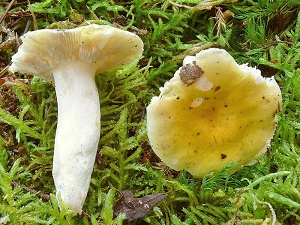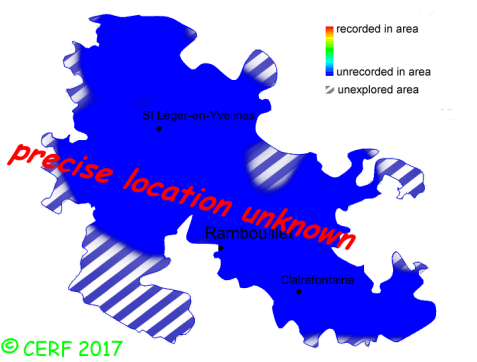| Russula solaris Ferdinandsen & Winge |
|
|
|
|
|
|
The cap is golden yellow to chrome yellow, convex then expanded and finally a bit depressed; its margin is striate when mature. The cap surface is smooth, a bit sticky when damp. The stem is white, without ring. The flesh is white, unchanging; its taste is acrid; the odour is fruity or of mustard; its texture is grainy (breaking like a chalk stick). The gills are yellowish, adnexed, emarginate to adnate, not very crowded . The spore print is cream to pale ochre. This species is mycorrhizal. It grows on the ground, in broad-leaved woods, on a rather calcareous soil, with beech, sometimes oak. The fruiting period takes place from July to November.
Chemical tests : flesh becoming salmon pink when in contact with iron sulphate; positive reaction to Ga´ac (bright blue), but not always fast; purple reaction of cap cystidia to sulpho-vanillin. Distinctive features : pale yellow cap, darker or more orange towards centre; white then yellowish gills; white flesh; fruity to mustard-vinegar like odour; soft flesh Russula solaris is rare and confined in the forest of Rambouillet, and is quite rare, more generally speaking . | ||
|
page updated on 14/01/18

